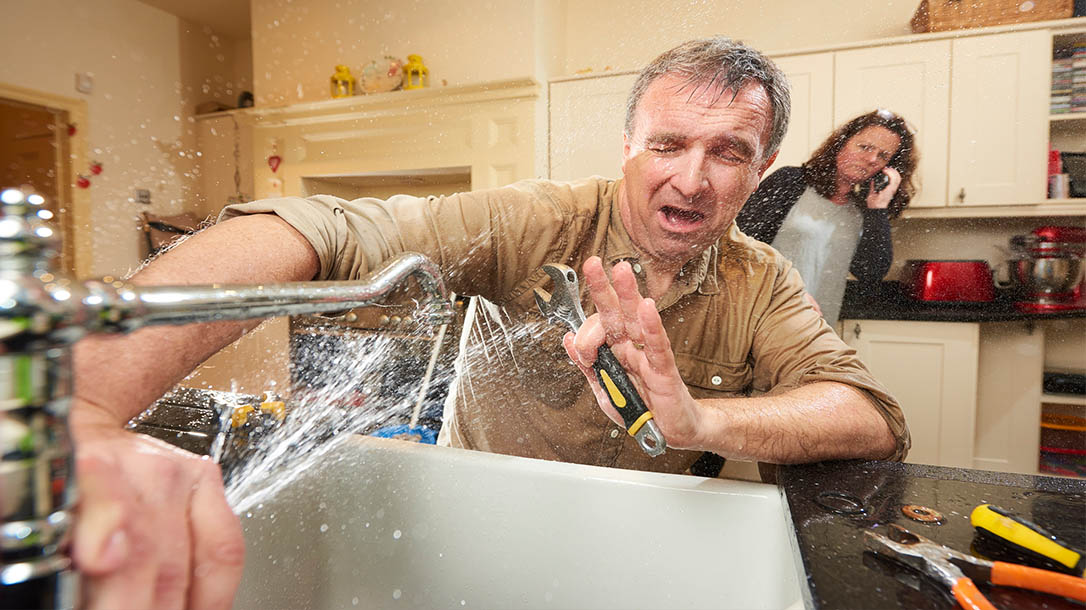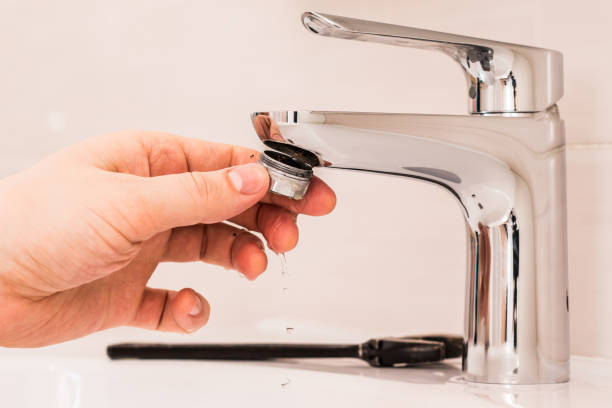Which It's Needed to Correct a Malfunctioning Faucet
Which It's Needed to Correct a Malfunctioning Faucet
Blog Article
This article in the next paragraphs on the subject of Leaky Faucets: Why They Happen & What to Do About Them is highly motivating. Read it for your own benefit and decide what you think of it.

Dripping faucets may feel like a minor trouble, but their impact surpasses simply the nuisance of the noise. From drainage to incurring unneeded economic prices and health threats, neglecting a trickling tap can bring about numerous effects. In this write-up, we'll look into why it's crucial to resolve this typical family issue immediately and successfully.
Waste of Water
Ecological Influence
Dripping taps contribute dramatically to water wastage. According to the Environmental Protection Agency (EPA), a single tap trickling at one drip per secondly can waste more than 3,000 gallons of water per year. This not just pressures water sources however likewise impacts ecosystems and wildlife dependent on them.
Step-by-Step Guide to Repairing a Dripping Faucet
Tools Required
Before trying to fix a trickling tap, collect the needed tools, including an adjustable wrench, screwdrivers, substitute components (such as washers or cartridges), and plumber's tape.
Common Tap Issues and Their Solutions
Recognize the kind of faucet and the details concern triggering the drip. Common troubles include damaged washers, corroded valve seats, or defective O-rings. Refer to manufacturer instructions or on-line tutorials for step-by-step support on repair work.
Financial Prices
Increased Water Expenses
Beyond the environmental influence, leaking faucets can inflate water bills substantially. The built up wastage in time translates into greater energy costs, which might have been avoided with prompt repair work.
Prospective Residential Or Commercial Property Damages
Furthermore, long term leaking can result in harm to fixtures and surfaces surrounding the tap. Water build-up can cause staining, deterioration, and even structural problems if left unattended, causing added repair costs.
Health and wellness Problems
Mold And Mildew and Mildew Development
The consistent existence of wetness from a trickling tap develops a suitable atmosphere for mold and mold growth. These fungi not just compromise indoor air top quality but likewise pose health and wellness dangers, especially for people with respiratory system conditions or allergies.
Waterborne Diseases
Stagnant water in trickling faucets can end up being a breeding place for bacteria and other virus, increasing the risk of waterborne illness. Impurities such as Legionella microorganisms thrive in stagnant water, potentially resulting in severe ailments when consumed or breathed in.
Do it yourself vs. Specialist Fixing
Pros and Cons of DIY Repair Work
While some may try to deal with a trickling tap themselves, DIY repairs include their own collection of challenges. Without appropriate understanding and devices, do it yourself efforts can exacerbate the issue or lead to incomplete fixings, lengthening the problem.
Advantages of Employing a Professional Plumber
Hiring a professional plumber makes sure that the underlying root cause of the trickling faucet is addressed properly. Plumbing technicians have the competence and equipment to diagnose and repair faucet problems effectively, conserving time and decreasing the risk of more damages.
Ecological Duty
Individual Payment to Preservation
Taking duty for dealing with trickling taps lines up with wider efforts toward water preservation and ecological sustainability. Every individual's activities jointly make a significant effect on protecting valuable resources.
Lasting Living Practices
By focusing on prompt repair work and embracing water-saving routines, individuals contribute to sustainable living practices that profit both present and future generations.
Preventive Measures
Normal Maintenance Tips
To stop dripping faucets, perform regular upkeep such as cleaning aerators, inspecting for leaks, and replacing damaged parts without delay. Furthermore, take into consideration setting up water-saving tools or upgrading to a lot more reliable fixtures.
Value of Prompt Repairs
Attending to trickling taps as soon as they're discovered stops more water wastage and potential damage, eventually conserving both water and cash in the future.
Influence On Residential Property Worth
Assumption of Well-Maintained Property
Maintaining a residential property in good condition, consisting of dealing with maintenance issues like trickling faucets, enhances its regarded worth and value amongst potential purchasers or occupants.
Impact on Resale Value
Residences with well-maintained plumbing fixtures, including taps, command higher resale values in the property market. Resolving leaking taps can contribute to a favorable impact during home evaluations and negotiations.
Verdict
Dealing with a leaking tap surpasses mere benefit; it's a crucial action towards preserving water, reducing financial costs, and safeguarding health and home. Whether with DIY repair services or expert help, acting to repair dripping taps is a little yet impactful method to promote liable stewardship of sources and contribute to a much healthier, much more sustainable future.
How to Fix a Dripping or Leaky Faucet
A leaking faucet is one of the most common problems that homeowners encounter, but it being commonplace doesn’t make it any less annoying. The constant drip drip drip of a leaking bathtub faucet, showerhead, or sink tap can disturb your home’s serenity. Left neglected, a dripping faucet can also result in higher water bills and discoloration or mold growth in your sink or plumbing fixtures.
Fortunately, you don’t have to be a trained plumber to know how to stop a dripping faucet. With some basic tools, replacement parts, and a little patience, leaky faucet repair is a breeze. In this article, we’ll explain what causes dripping faucets and how you can fix them.
What Causes a Leaking Faucet?
Kitchen and bathroom faucets come in all manner of designs, but most involve some combination of valves, O-rings, seals, and washers. The O-ring is usually the weakest link, but any one of these pieces can wear down over time. Heat, moisture, temperature fluctuations, minerals, mold, and movement can contribute to warping and corrosion, breaking the watertight seal. This just comes with the territory of being a homeowner. Everything is always subject to wear and tear, and some component parts of your appliances and fixtures need to be replaced on occasion. At least replacement O-rings are cheap!
More rarely, dripping faucets can be a symptom of excessively high water pressure. Were this the case in your home, you would probably notice that the leak is not isolated to one faucet. Water pressure issues are harder to resolve on your own. We recommend contacting a professional plumber if you suspect your water pressure is too high.
How to Fix a Dripping Faucet
Pipe wrench or monkey wrench Allen wrench set Screwdrivers Old towel or rag Shut off the water.
Before you do anything, you need to turn off the water to keep from drenching your kitchen or bathroom. You should find a valve under the sink and against the wall. Once you’ve turned this valve, try turning the faucet on to confirm that the water source has been cut off.
If you can’t locate your local valve for the faucet you’re working on, you can always shut off the water to the house at the main valve. Of course, this will prohibit anyone from using the sinks, showers, or toilets while you’re working on the faucet that’s giving you trouble.
Plug or block the drain.
You’ll be disassembling the faucet and removing some small bits of hardware. Plug the drain with a stopper or rag to avoid the possibility of a small screw falling into your P-trap.
Take apart the faucet assembly.
There are several varieties of kitchen and bathroom faucets, each with its own manner of assembly. For detailed instructions on how to disassemble your faucet, you can refer to the fixture’s manual or contact the manufacturer. If you know whether you have a ball, disc, cartridge, or compression faucet, you can find detailed schematics online.
In general, you need to begin by removing the faucet handles. You might notice a small screw that you’ll need to remove with a screwdriver or Allen wrench. If you don’t see any visible securing hardware, it’s likely hidden under a decorative cap that can be unscrewed or popped off with flathead screwdriver.
Remove each piece methodically, consulting a schematic when necessary. Take notes or arrange the pieces in such a way to make it easier to correctly reassemble the faucet later.
Remove the cartridge.
Once you’ve removed the handles and securing hardware, you should be able to remove the valve cartridge or stem. Some cartridges will slide right out. Other faucet models will require you to loosen a nut with a pipe wrench before you can remove the valve stem.
Examine the exposed hardware.
With the cartridge or stem removed, inspect the component parts. Check the rubber O-rings for wear and tear. Also examine the seat washer for corrosion or other damage. These pieces are usually the responsible parties for a dripping faucet, but it’s worth inspecting the other component parts while you have the faucet disassembled.
Find replacement parts.
Once you’ve identified which faucet component has failed, find an identical replacement. Your local hardware store should have O-rings, seat washers, and other standard components in stock. If you have a luxury or uncommon faucet, you may have to contact the manufacturer for a replacement part.
It’s a good idea to take your old parts with you to the hardware store so you can compare them with the store’s inventory and be sure you’re purchasing the correct replacement.
Reassemble the faucet.
With your new parts in hand, reconstruct the faucet and handles. Don’t be tempted to overtighten screws or nuts. You might think this could create a better seal, but it can instead damage or bend a delicate part of the assembly and create a new problem for you.
Turn on the water and test the faucet.
The only thing left to do is test your work. Unplug the sink, turn the water back on, and try the faucet. Congratulate yourself on a job well done!
https://www.libertyhomeguard.com/how-to-fix-a-dripping-or-leaky-faucet/

Hopefully you liked our post on Water Dripping from Faucet: Why and How to Fix. Thanks a ton for spending some time to read our short article. Liked our blog? Please quickly share it. Help other people find it. Thanks so much for going through it.
Report this page